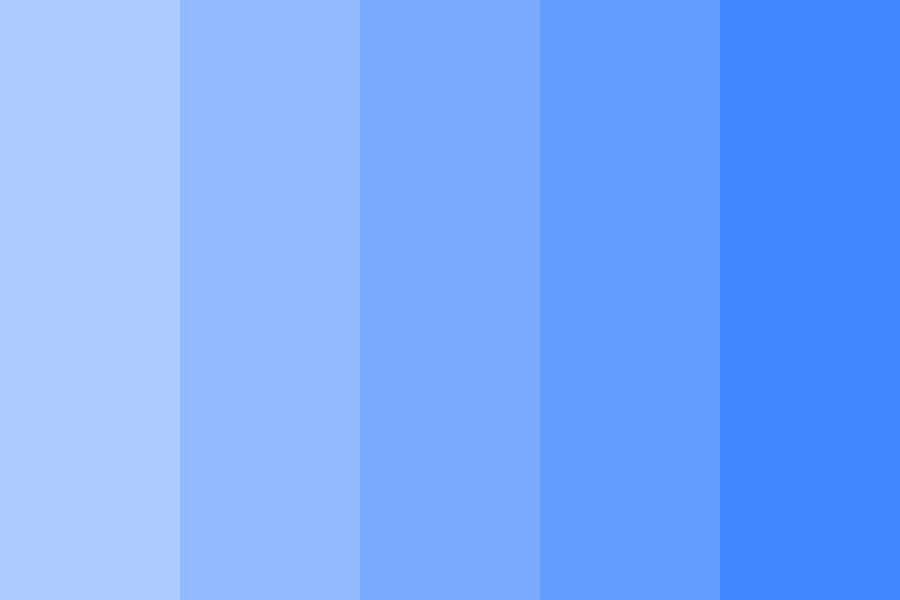Blue is one of the primary colors and it can have many different tones and shades. When looking at blue paint colors, they are often separated into 5 main categories based on their undertones. The 5 tones of blue paint are:
Cool Blues
Cool blues have undertones of green, teal, or aqua that make them crisp and refreshing. Some examples of popular cool blue paint colors include:
| Baby Blue | A very light blue with a slightly green/aqua tint |
| Blizzard Blue | A pale, icy blue color |
| Celestial Blue | A soft, peaceful blue with hints of green |
| Icy Blue | A bright, icy blue that is slightly muted |
| Spa Blue | A relaxing, blue-green color |
Cool blues work well in bathrooms, kitchens, and bedrooms because they create a calm, tranquil environment. The cool undertones are soothing and promote relaxation. Rooms painted in cool blues also appear larger and airier.
Warm Blues
Warm blues have hints of purple, mauve, or rose that give them a cozy, inviting vibe. Some popular warm blue paint colors include:
| Denim Blue | A casual blue with purple undertones |
| Dusty Blue | A soft, muted blue with hints of gray |
| Periwinkle Blue | A lively lavender-blue color |
| Seaside Blue | A bright, inviting blue |
| Twilight Blue | A dusky blue with subtle purple tones |
Warm blues work well in living rooms, dining rooms, and bedrooms because they promote conversation and comfort. The hints of purple make warm blues feel enveloping and intimate.
Vivid Blues
Vivid blues are highly saturated, intense blues that really make a statement. They are bold and dynamic. Some popular vivid blue paint colors include:
| Cobalt Blue | An electric, eye-catching blue |
| Majestic Blue | An intense royal blue color |
| Midnight Blue | A deep blue, almost black |
| Pool Blue | A bright blue reminiscent of pool water |
| Sapphire Blue | An exotic, jewel-toned blue |
Vivid blues are perfect for making a dramatic impact in any room. They work especially well in moderation on accent walls or front doors. Too much vivid blue can be overstimulating, so use it sparingly.
Neutral Blues
Neutral blues have gray undertones that tone down the vibrancy, making them extremely versatile. They work in almost any room. Some popular neutral blue paint colors include:
| Cadet Blue | A grayish blue with subtle green tones |
| Classic Blue | A timeless, mid-tone blue |
| Coastal Blue | A soft blue-gray reminiscent of the sky |
| Navy Blue | A darker blue with strong gray undertones |
| Steel Blue | A blue-gray with hints of green |
Neutral blues are highly flexible and work in almost any space because they act as a backdrop that absorbs both warm and cool accent colors equally. Their muteness makes them soothing without being dull.
Bold Blues
Bold blues are highly pigmented rich blues that make a dramatic impression. They have an opulent feel to them. Some popular bold blue paint colors include:
| Indigo | A dark inky blue named after the plant dye |
| Lapislazuli Blue | An intense azure blue named after the stone |
| Peacock Blue | A vibrant blue-green reminiscent of a peacock’s feathers |
| Royal Blue | A rich blue associated with royalty and elegance |
| Ultramarine Blue | A bright, jewel-toned blue made from the mineral lapis lazuli |
Bold blues make luxurious accent colors but can easily be overpowering if overused. They evoke a sense of luxury and drama. Small doses of bold blues can create an elegant, royal feel in formal spaces.
Choosing the Right Blue
When choosing a blue paint color, first consider the mood you want to create and how much color saturation is ideal. Cool blues promote tranquility, warm blues encourage coziness, vivid blues create drama, neutral blues provide flexibility, and bold blues evoke luxury. Also factor in how much natural and artificial light the room gets. Darker blues can feel gloomy in rooms with minimal light. Lighter blues help brighten up dim spaces. Finally, test out paint swatches and view them at different times of day before committing to a blue. Samples often look very different in natural light versus evening lamplight. With so many shades of blue to choose from, you are sure to find your perfect tone.
Conclusion
Blue paint colors come in an endless variety but generally fall within 5 main color tones: cool blues, warm blues, vivid blues, neutral blues, and bold blues. Cool blues have a relaxing green/aqua undertone. Warm blues take on a cozy purple/rose hue. Vivid blues are highly saturated and eye-catching. Neutral blues have gray added to tone down their intensity. And bold blues are dramatically pigmented and opulent. Consider the mood you want to create and the amount of natural light when selecting a blue paint color. With the right shade of blue you can bring both tranquility and vitality into any space.


